How to Store Dehydrated Foods
Have you wanted to learn how to store dehydrated foods? Here’s a basic guide on all you need (which is very little, actually!)
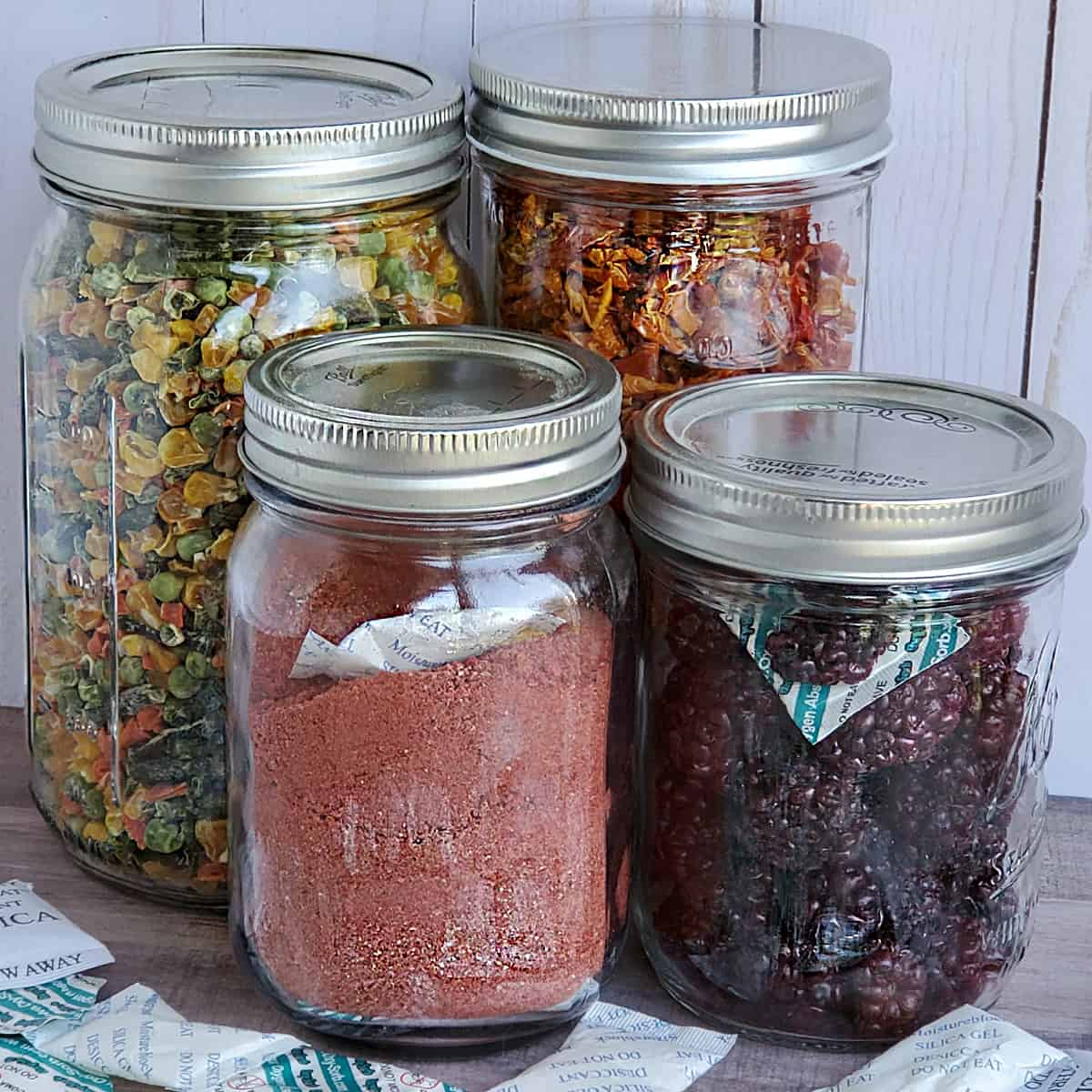
Storing dehydrated foods is always a question people worry about. It’s a lot of work, and there are some websites out there that say dehydrated foods are only good for two weeks, or must be stored in the freezer.
Thankfully, that is misinformation that applies specifically to jerky that has been expanded to many foods.
With proper drying, conditioning, and using the correct storage containers, your food is going to be good for at least a year or two (and perhaps much longer).
Do I need to vacuum seal or use O2 absorbers?
No. You don’t NEED anything if you have properly dried, conditioned and stored your product.
Can they be helpful? Yes. But don’t let your lack of that equipment stop you from dehydrating and storing as much food as you wish!
 How do you know if fruits and vegetables are dry?
How do you know if fruits and vegetables are dry?
What Containers to Use?
Airtight containers are what is needed for storing dehydrated foods. Here are a few you can choose from:
Airtight Containers
Any airtight container will work – but test to make sure it’s truly airtight. If you can squeeze the sides and hear air escaping, it’s not airtight. Commercial glass jars with good lids, Tupperware, other plastic ware with good seals, and lids with silicone inserts.
Airtight does not equal vacuum sealed.
Airtight containers don’t allow the transfer of air into and out of the jar. Think of a canning jar. This is all that is needed for food storage.
Vacuum sealed means the air has been drawn out of the jar, leaving just the food.
Canning / Mason Jars
These are the easiest and most flexible containers to use. They can be used as-is, as long as you are storing them in a jar that is equivalent in volume to the food you are storing.
In other words, don’t use a giant jar for a small amount of dehydrated food.
Jars should be clean (hot soapy water is enough, but you can run through a sanitizing cycle on your dishwasher or boil them if you desire the extra clean), dry, and free of knicks and cracks.
A benefit of canning jars is that you can use them over and over again without waste.
They can also be vacuum sealed to help extend the life of your food on the shelf. Here’s the handheld vacuum sealer that I use. You’ll also need these jar attachments that go over the jar and lid and work with the vacuum sealer or brake bleeder to draw out the air.
How to Use a Brake Bleeder to Vacuum Seal Jars
Another option is using a brake bleeder to vacuum seal your jars. I’ve included it in my 4 ways to vacuum seal a canning jar video below.
What about reusable canning lids? Unfortunately, no! Watch the video here on using Harvest Guard reusable canning lids. There’s no tested length of time on them since the company has not provided information on that.
You may successfully use a brake bleeder to seal your reusable canning lids, but because there is no safe, tested method with reliable results, use them for canning and regular dry storage.
Vacuum sealing bags
Vacuum bags are best for storage of items for the freezer, but can handle dehydrated goods that are not sharp or pointed.
Sharp and pointed edges can eventually puncture the plastic and ruin all of your hard work by allowing air to get in even the smallest of puncture holes. (These generic brand vacuum-seal bags work just as well as the name brand!)
You can see how to use a vacuum sealing bag with a vacuum sealer here.
To use with dehydrated foods, it’s best to wrap the dried food in parchment paper, then insert into the vacuum seal bag for sealing. This helps protect the bags from punctures.
Also, be mindful that many dehydrated foods are easy to crumble, and vacuum sealing and storing can crush and break them down to small pieces.
A tip: Use a much bigger bag than you need the first time. Open, wash, and cut down to reuse so extend their life.
Mylar Bags
Mylar bags are perfect for long-term storage of dehydrated goods. They are easy to vacuum seal with an O² absorber (see more info on that below), or if they are the rough inside version, they can be vacuum-sealed. They are not easily punctured by dehydrated foods but are not rodent-proof, so store them in larger rodent-proof canisters if needed.
Expert Tip: Do not use mylar bags with clear windows or zipper tops for long-term storage. Both of these options are air permeable and will fail for your storage after a time. They are fine for gift-giving or for short-term storage.
Zipper-top Bags
While these are not good for short to long-term storage, they are good for storing smaller quantities that will then store in a larger airtight container. Just be sure to use the thicker freezer versions.
EXPERT TIP: I often store things in container sizes in a zip-top bag, then store them in one larger container to make segmenting easier for me. They are also fine for items like fruit leathers that are going into the fridge for a few days, or for jerky going into the freezer for a month or two.
Where to store dried foods?
Dehydrated foods do best in a cool, dark space. As with all food, light, heat, oxygen, and moisture can degrade food’s potential for storage.
“Cool” place is ideally between 50°F-70°C (10°C-21°). The warmer the space, the less storage time you have. Too warm, and you may encourage mold growth in fruits that are not completely dry.
“Dark” A closet, a cabinet, a bookcase with a cover over it, a food-grade bucket, etc. are the best places to store your dehydrated foods. Direct sunlight is not recommended at all, and indirect sunlight will not spoil your food quickly, but may reduce storage time.
Storage Tips
- Condition first – nothing is worse than pulling dried fruit out of your machine, putting it into storage, and finding it molded two months later. Follow proper drying and conditioning, and you’ll be fine.
- Package in smaller quantities – instead of storing in a large container exposed to air each time you open it, try a daily use container and one you store the excess in.
- Powder only as needed – dried foods last longer in their whole form than powder form, so powder only as much as you need for the next month or two.
- Label jars – Trust me – dried herbs all look the same; some may lose their initial smell (crumbling brings it back). Powders all begin to look alike when you have a lot of them. Label your jars with the food item and date dried.
How Long do Dehydrated Foods Last?
By the safety standards of the NCHFP if foods are properly prepared, dried, conditioned, and stored:
- Dehydrated foods for up to two years years
- Powders for 6-9 months
However, we know that practically, dehydrated foods can last up to five years or more. But some foods, such as tomatoes, will begin to lose taste, texture, and color faster than others, so keep an eye out. This is also another reason why blanching is important for dehydrating some foods!
Powders, on the other hand, like herbs and spices, have a shortened shelf-life because so much more of the surface area has been processed and exposed to light, heat, air, and moisture. So it’s best to store whole, and powder on demand.
O² Absorbers VS Desiccant Packs – When, Why, and How to Use Them
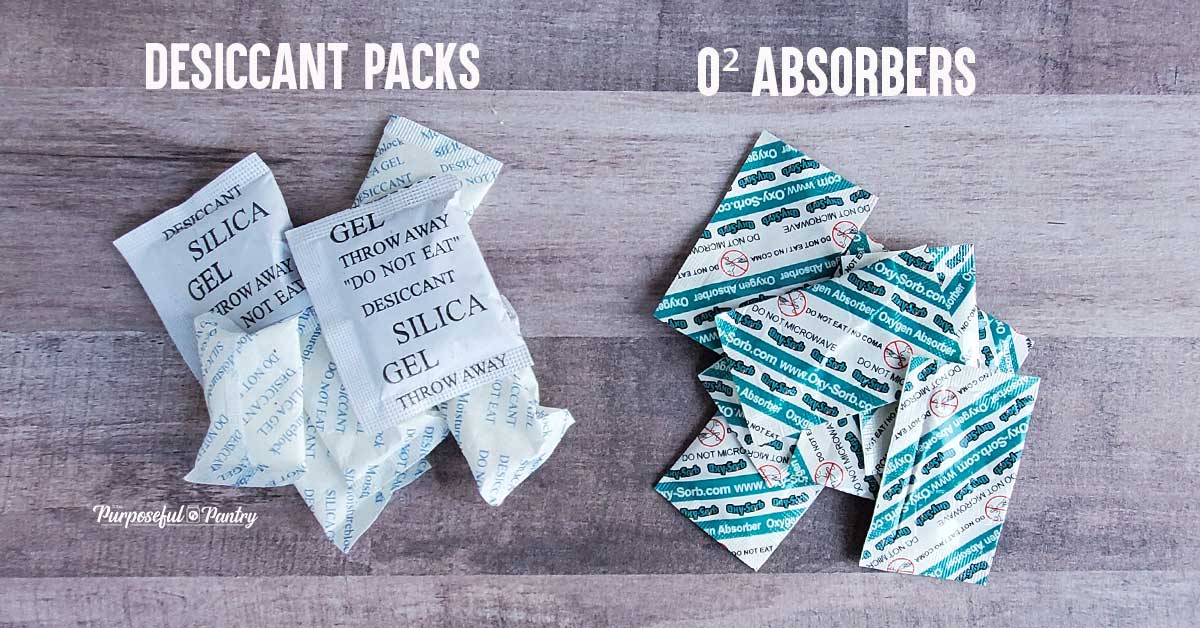
As a note, neither are mandatory to use in everyday dehydrating. A moisture absorber is helpful and can give you peace of mind, but you don’t have to use them. O2 absorbers are only necessary if you have no means of vacuum sealing and want to store them long-term.
However, either can help give you some peace of mind if used correctly. And please NEVER use them together.
Moisture Absorbers or Desiccant packs
Moisture absorbers are also known as desiccant packs or silica gel sachets. They are all silica bead packets that absorb moisture.
They are the small pack of beads found in shoe boxes, vitamin bottles, and other sundry items. But please don’t use those in your food. They generally aren’t food-safe or have residue of things you don’t want in your food.
What size to use?
A 2-gram moisture absorber is generally all you need for up to a quart-sized jar. Dry and Dry Brand is the brand I use.
Benefits
- Help control moisture levels in dried fruits from excess space in jar.
- Help control moisture in containers that you are in and out of all the time.
- Can be recharged by putting it into your oven at 250°F to dry for 2-3 hours, or just putting into your dehydrator at 160F for a few hours.
Can Moisture Absorbers Be Reused?
Yes – that’s what makes them worth investing in. They aren’t expensive and can be reused!
- Place on a cookie sheet in a 250°F/120°C oven for a few hours
- Put into the dehydrator at 150°F/65°C for 4 or 5 hours to be completely dry
- Store in an airtight container.
DIY option: There is a DIY moisture absorber option to making your own desiccant packs if you’d like to try it.
TIP: DO NOT MIX moisture absorbers and oxygen absorbers in the same container. The O2 absorbers need moisture to work properly, so having a desiccant pack is counterproductive.
Oxygen Absorbers
O² absorbers are used to remove oxygen from a container. This does nothing to help control moisture, but it simply removes the oxygen.
Because an O² absorber is not reusable and is useless if left open to the environment, they are not meant for containers you get into constantly. They are for long-term storage.
Benefits:
- Help control oxygen in containers that you cannot vacuum seal such as food-grade buckets, mylar bags, or large jars that can’t be vacuum sealed.
- Help control oxygen in jars that have a lot of space and you want to ensure all oxygen has been removed.
Drawbacks:
- Ruined if exposed to air (so be prepared to use them quickly and store the rest when using them)
- Are not reusable or rechargeable
- No DIY option to make your own
- Not good for jars or containers that are not airtight.
- Not good with foods that are high in fat (nuts, granola) or partially dried foods (dried fruit or other foods you did not completely dry).
Expert Tips
- When purchasing oxygen absorbers, spend a little more and purchase in smaller quantities to help reduce the risk of exposure. Several small bags of 5 each are a little more expensive than one bag of 100, but you run much less risk of exposing them all when trying to deal with them.
- Fruits are generally dried to between 15-20% humidity and are not good for use with oxygen absorbers. There are conflicting studies on this (one by the Utah Extension service that says it’s okay to use without any mention of percentage of moisture. But if you’re drying your fruit properly for storage and not for snacking, you should be under 15%. However, BeReadyUtah.gov recommends “Only store dry foods that have 10% moisture content or less, otherwise there is a risk of botulism.” This would be the case in an oxygen-free environment of vacuum sealing or using an oxygen absorber.
Alternatives to O² absorbers
The best alternative to purchasing and messing with oxygen absorbers is to use a vacuum sealer. While it doesn’t remove 100% of the oxygen in your jar, it removes most, and for the year or two most dehydrated foods are good for, it’s enough.
Plus, there are some foods that are high in fat that you don’t want in a completely oxygen-free (anaerobic) environment (this is the reason storing tomatoes in oil isn’t a great idea – moisture + bacteria – oxygen = botulism).
Use with vacuum seal bags or with the jar sealer attachments on mason jars.
How much to use?
General formula
- 2 gram desiccant pack for quarts
- 100cc O² absorbers per quart.
I provide a printable chart for all of the sizes and uses for both packs.
Get a free printable chart by joining The Purposeful Pantry Newsletter.
Learn more: Repackaging Freeze-dried foods for long-term storage.
What Do I Personally Use?
I use simple airtight containers and/or vacuum seal. Moisture absorbers are saved for things like onion powder which can easily absorb a lot of moisture in daily use (as many powders, but it is a big culprit in clumping and desiccant packs are one of the better ways of keeping it dry and clump-free. If you want to see some other ways to keep dehydrated powders clump-free, check out these tips.
What should you use?
Ultimately, an airtight container is enough.
But vacuum sealing in whatever form you use, or moisture absorbers both act as insurance policies to help protect your food from going bad in storage.
Using either with the knowledge of how they work will help you create a food storage system to increase your food security and stock your pantry for years!
Generally, no. Dehydrated food is shelf-stable, and doesn’t need refrigeration.
However, if you like to keep dehydrated fruits softer, they will need to be refrigerated because they still contain moisture which can mold over time.
Foods like jerky that have not been cured need to be stored in the freezer for optimal storage.
While dehydrated foods are optimally good for up to two years, you may get longer by including oxygen absorbers in airtight containers (either canning jars or mylar bags), to help ensure a longer shelf-life. Some items may last for many years.
Let Me Know if You Have Questions
Questions or want to share your favorite way of storing dehydrated foods? Let me know in the comments below!

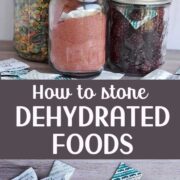

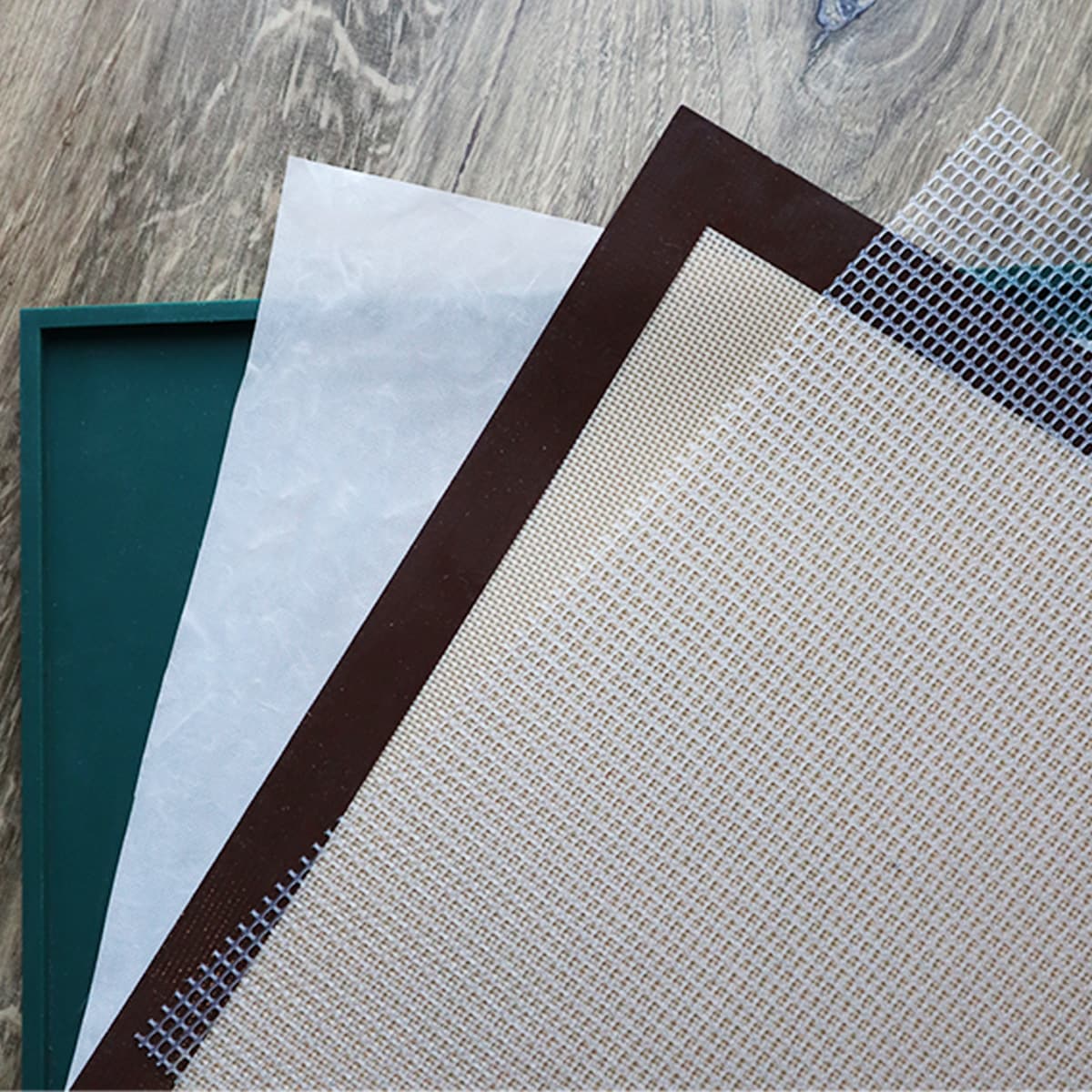
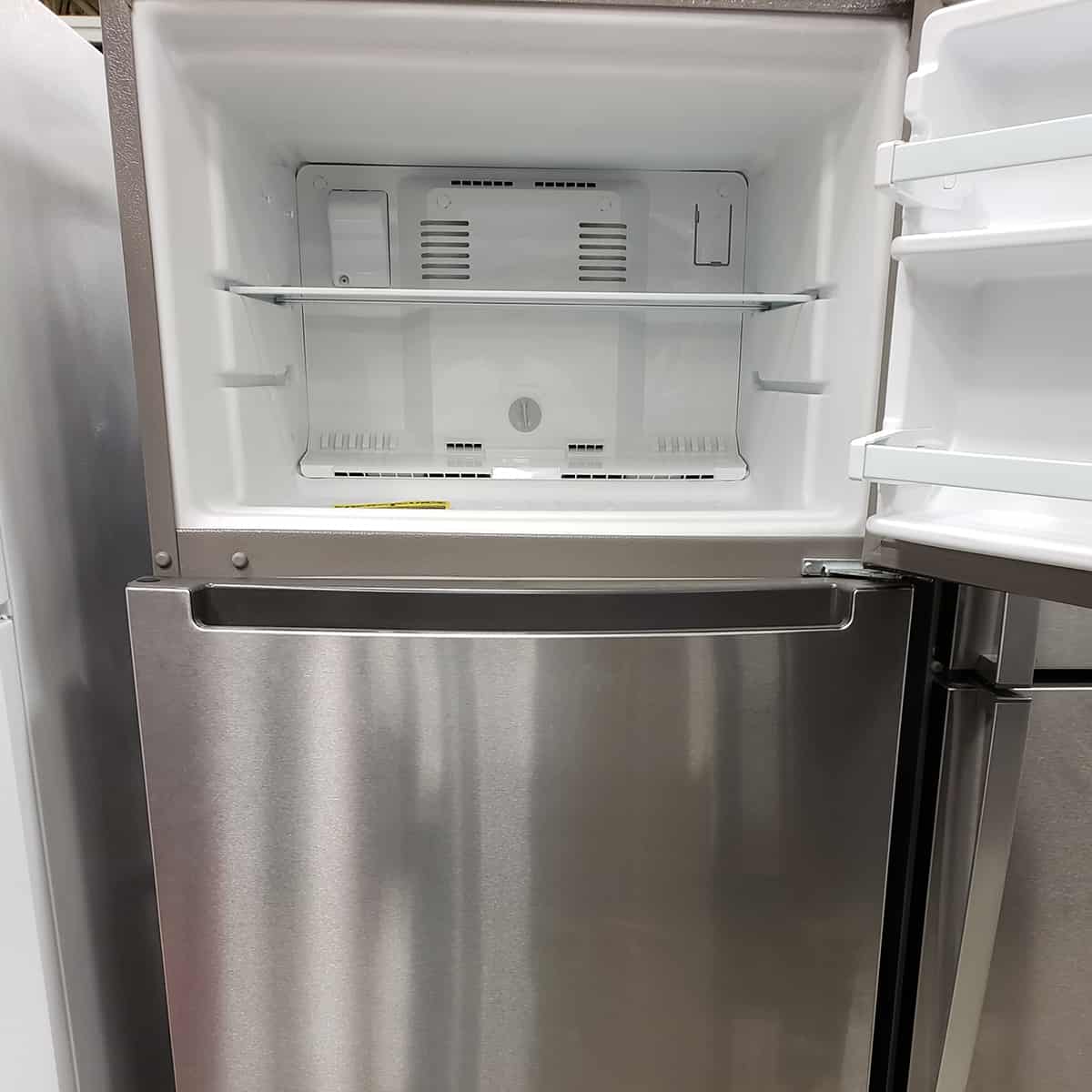
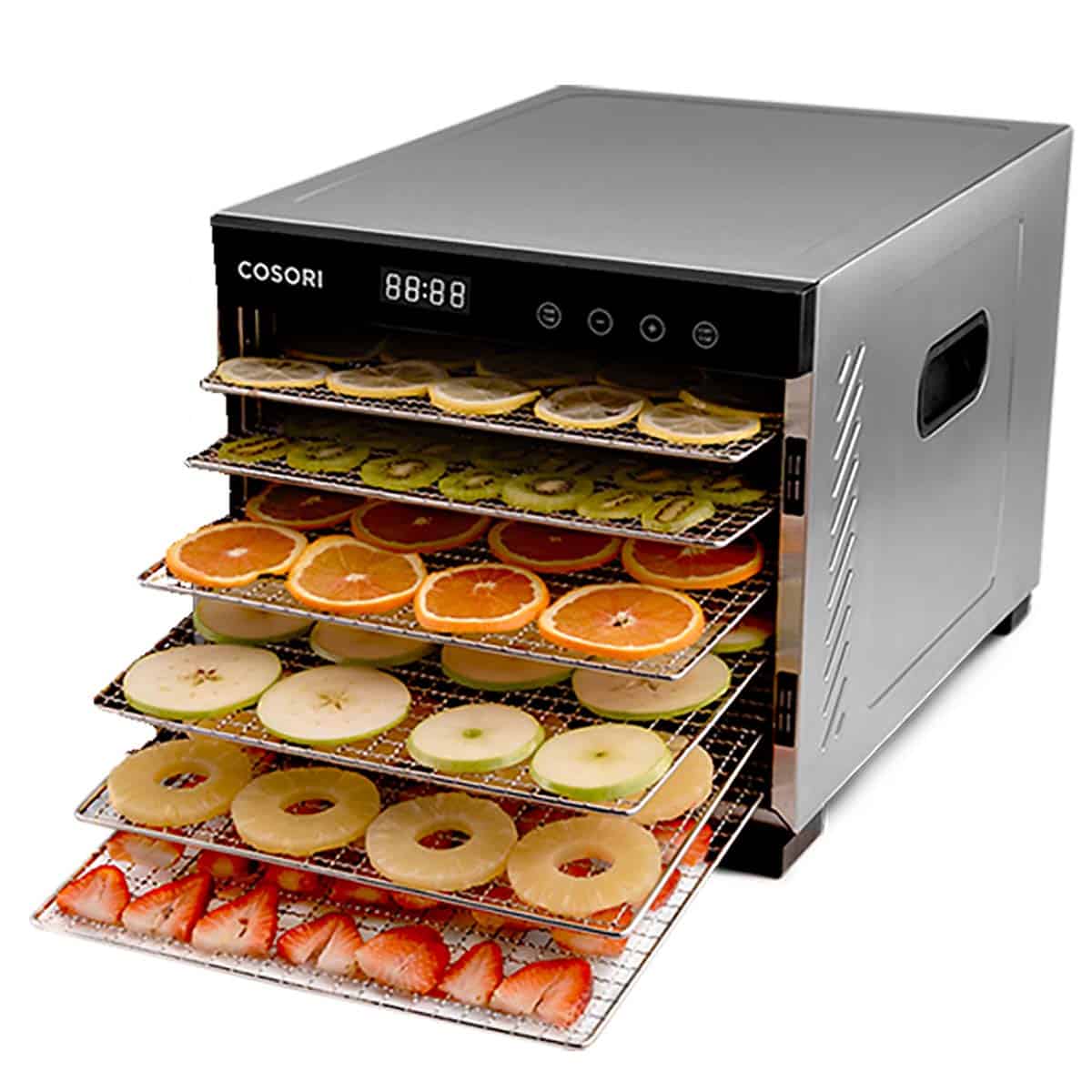
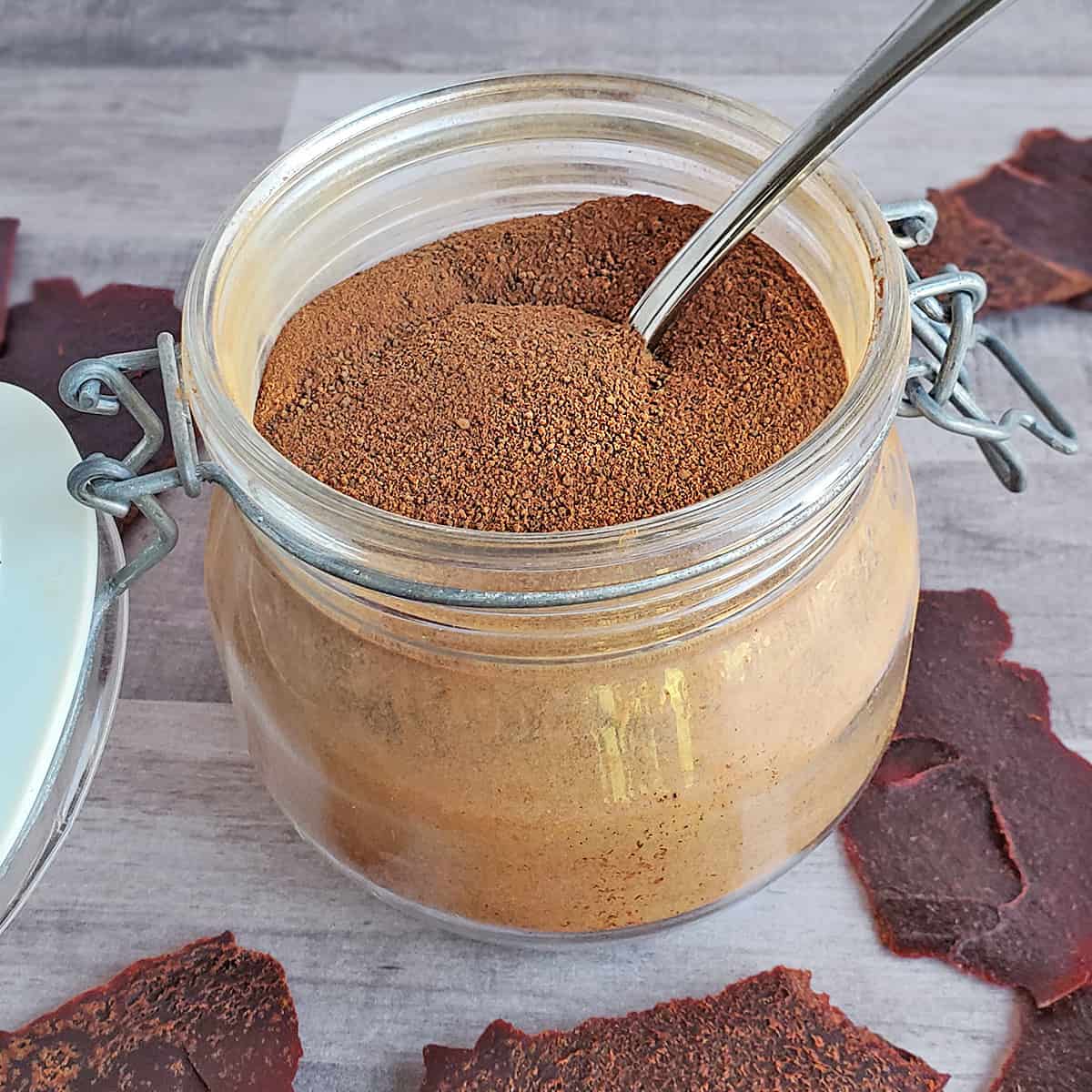
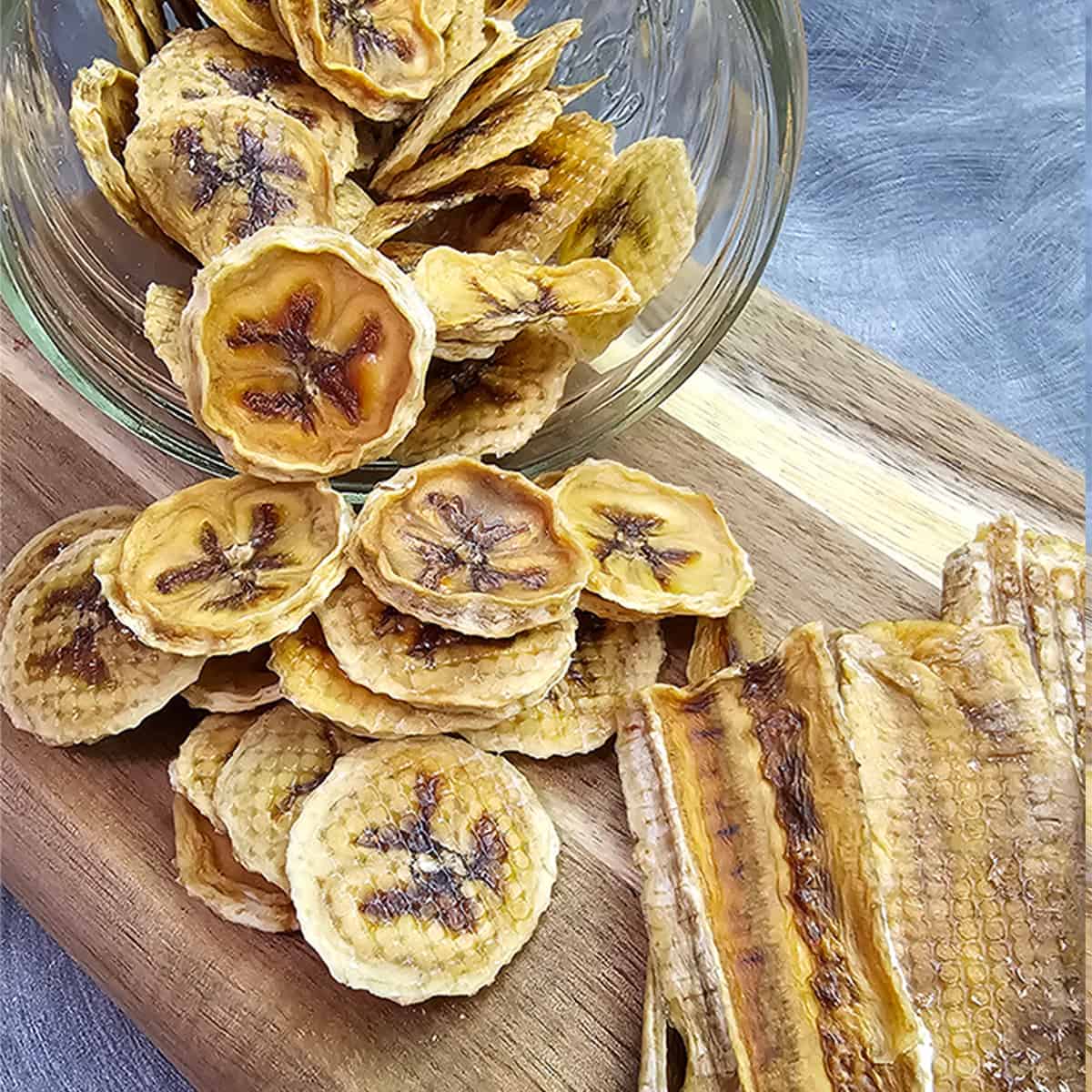
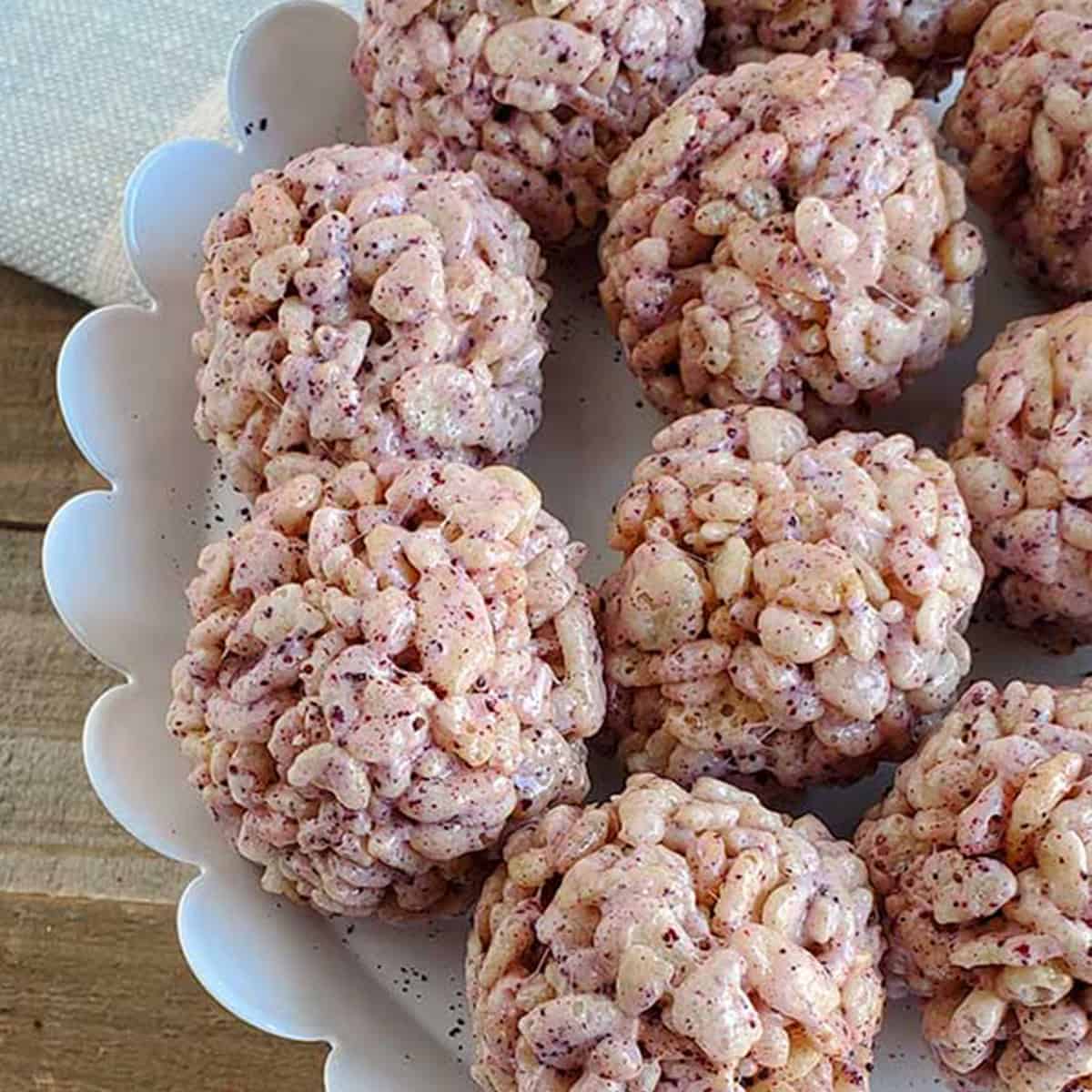
What is the best resource for me to use when dehydration and using my new food saver for preserving foods. I’m really new to good preservation and I’m seeing a lot about jars, bags and o2 absorbers that is confusing me. Also, conditioning before and after. So confusing . Please send reliable resources for newbie. Thank you ?
The information in this blog post gives you all that already – I’m not sure what specific question you might have wasn’t answered. Can you ellaborate?
So just to be certain I understood, we cannot use reusable canning lids (like Tattler)? I have been using them until now without a ring and checking them often, and they seem to be holding a seal well, but I will not do that if it is unsafe. Thanks.
Do you mean vacuum sealing them? If you’re getting a seal that’s staying, great, but they aren’t made for it and if it comes unsealed without the ring on, then you’re exposing your food to moisture and air. I’ve tested them and the seals did not stay, and they have said they weren’t made for vacuum sealing. So I’d put the ring on if it were me.
I’m pretty comfortable storing and using dehydrated vegetables. I’m vacuum sealing some of my vegs in food saver bags but recently came across the statement that cruciferous vegs [broccoli, cabbage, kale, etc] should not be vacuum packed. Have you ever seen this info? It eluded to spoilage due to off-gassing. My products are completely dry and crunchy to the point that I have to double bag to avoid punctures. Any thoughts on this spoilage issue?
I don’t vacuum seal my vegetables in plastics, so I can’t comment on it. I’ve never heard it before, and gasses would typically not be an issue as they’ve been blanched ahead of time (surely you are).
Thanks for all the info!
If I’m using a mason jar and have vacuum sealed, is it appropriate to remove the bands, like I would for canning?
Keep the lids on. If your seal fails, it’s the only thing keeping the jar airtight. It isn’t quite the same process as it is with canning – where the ring can make a false seal and you think the food is safe.
Thank you!!
Darcy.. newbie here . This is my first time rotating some of my dehydrated vegetables. They are in mason jars with a o2aborber with a date of 9/24/22. The cauliflower has turned brown. Is this normal or have I waited to long ?
Did you blanch it first? It does tend to turn color over time – and when you rehydrate/cook with it, it may regain some of its color again – cauliflower is a little weird.
I dehydrated it from frozen. It was one of my beginner projects. I thought I would start out with frozen foods since they are supposedly already blanched.
I am confused…..
We went to the Utz factory and got a huge box of broken large sourdough absorbers? Easily 8 to 10 gallon jars full. I don’t want them to go stale in storage so should I use an oxygen absorber or a moisture absorber?
Long-term food storage = O2 absorbers. Moisture control in things you are in and out of = Moisture Absorbers
Hi!
Thank you for all the info.
Do you seal the container of dehydrated food immediately and then condition or condition in airtight jars x7 days, then seal.
Thanks.
alma
Condition first, then store.
I am interested in more long term for dehydrated vegetables. Would vacuum sealing then storing in freezer extend the life? It takes up much less room this way but I don’t know if it extends the usefulness. Ghank you.
What is long-term storage to you. Dehydrated foods get you 1-2 years conservatively, and many people have success with up to five. Oxygen absorbers can help, but don’t guarantee. If you want longer-term than that, you need to look to freeze-dried foods.
I am trying to find out. If you can dehydrate precook frozen chicken? I get commodities every month. I get of pre frozen chicken. well I am running out of room in my freezer. I don’t to throw it away. So wondering if can dehydrate it. I subscribe to your YouTube channel. I am learning a lot.
You can, but ultimately, for safest storage, it should be in the freezer. Shred it well, dry it, and store it in the freezer.
After the jars are sealed, how do you take the lids back off without damaging them? I know they are reusable.
With a tool that won’t bend them – I use a rounded bottle opener.
I place a nickel under my bottle opener so it doesn’t damage the lid.
I don’t have a can opener like Darcy. I love this site. So much info that I haven’t found else where.
Do you need to be concerned about botulism in a vacuum-sealed canning jar (of dehydrated foods) like you do if you use oxygen absorbers, or is there still enough oxygen in the jar to prevent it?
Nope. There is false information floating around right now about it. And no, this is not like canning. If your food is dried properly, there is no risk of botulism.
Thank you!!!
Question – I only have 1 gram silica gel packets. Can I use 2 in a quart jar or do I have to buy the 2 gram packets?
Use more – it’s fine.
Thank you for always answering all my questions. You go above and beyond. I can’t express how much l appreciate all the wisdom that you share!!
It means the world to me that my food is safe and that you care.
Glad you found it helpful!
Super good content on your video! Easy to understand and follow. Thank you for providing this info. I still am wondering how to store popcorn, tho. I have it stored in Mason jars with plastic tight lids, not sealed. No packets either. Should I deal these jars?
Popcorn is fine in airtight containers just like all other dried goods. If you want it for long-term, using O2 absorbers to vacuum seal the jar is beneficial to keep the kernels from being exposed to more oxygen that will reduce their shelf-life.
Just made my first batch of dehydrated oranges. After I condition them I will move them into a mason jar. Can I just put the lid on it do u have to vacuum seal the cannon jar. I plan on using the oranges daily in my water and tea and to snack on. Thanks!
Just like I said above, an airtight container is enough – just make sure it is about the same size as what you’re trying to store in it.
This info is very helpful. Thank you so much! Will I be able to store dried pineapple pieces in airtight lid having used my hand vaccum sealer? They are chewey not crunchy..but i dehydrated for 36 hrs.
The time you dry doesn’t matter. The dryness of the fruit matters. If it is chewy – and soft, it is not done. It should be leathery, and will have some bite, but should not be chewy as if it were soft.
I’m new in this and you are helping me a lot by publishing all this im information, thank you